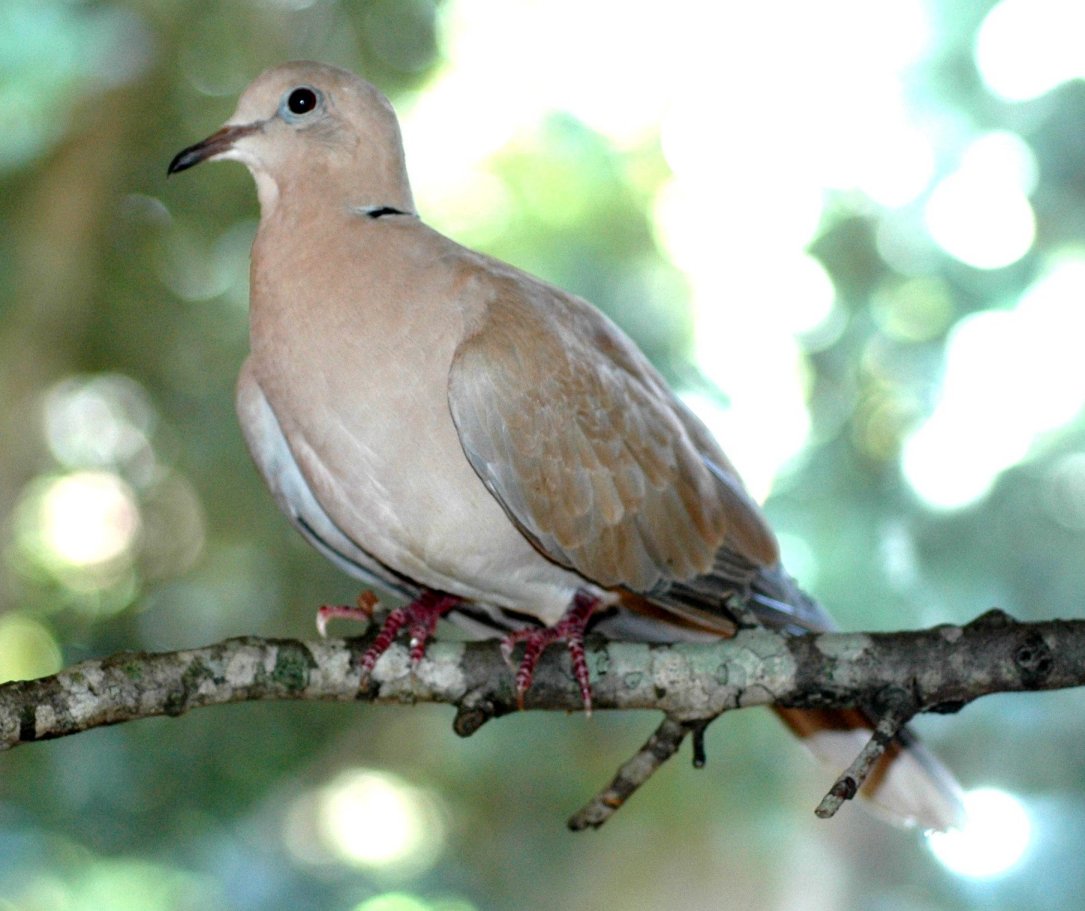Ringneck Doves
Three papers published by Dr. Wilmer J. Miller
.....Cultural Information
.....Ringneck Behavior
.....Sex Determination

Ringneck Dove
Some Dove Culture Information
By Dr. Wilmer J. Miller
Dept. Zoology & Genetics at Iowa State University
While there are many species of doves (about 300), most people are interested in the ringneck dove, also known as the domestic, laughing dove, collared dove, Barbary dove, and turtle dove. It's scientific name is Streptopelia risoria. These are doves of the Bible; they are not native to the USA. In French they are tourterelle a' collier; in German they are lachtaube.
Transportation:
A few doves together in a roomy paper bag or carton will be OK for short trips. No holes are needed,. But if they are to be in a cardboard box a long time, some narrow vertical slits and horizontal hand holds can be cut with a knife.
Behavior:
Males caged together may fight. Sudden quick movements, strange objects, new loud sounds (bangs), and new or bright colors such as yellow, orange, and red may induce temporary panic. A stick can appear as a snake to them! [See reference below]
Holding:
Holding a dove by its wings (vertical) can result in broken wings. Control the wings by covering the shoulders with your hands with the dove's head toward your body ("2 handed" ) . For holding with one hand over the doves back, hook the little finger in front of the "far" wing and control the shoulders by 3 fingers along the shoulder and wing and the thumb over the near wing.
Feeding:
Various grains such as wheat, milo or kaffir, rice, millet, cracked corn, vetch, chopped peanuts, safflower and little back sunflower (high in oil) can be given. There is less waste if these are not mixed. Don't overfeed! Extra feed on the ground may spoil and cause illness. Pigeon pellets or the smaller game-bird pellets (20% protein), or "crumbled" poultry feed, if reasonably fresh, are good for supplementing grain. The pellets will supply vitamins A andD3. The D3 is necessary if direct sun is not available, such as behind glass windows. Doves also like extra calcium (crushed eggshell, or oyster shell, or "granular F "). Livestock salt with trace elements such as iodine, cobalt, manganese, etc. is also useful. This extra mineral supplement is especially necessary if the doves are raising young. Deep green leaves are often desired by the doves, such as dandelion leaves, but they are not necessary if pellets are given. Be sure that the leaves have not had herbicide sprayed on.
Doves drink water like pigeons in a continuous draught. One big drink per day is minimal, but morning and evening drinks or at liberty is much better.
Breeding:
These doves like warm dry climate. Their original homeland was North Africa, Somalia, and Arabia. They are not migratory. With plenty of food they will breed most of the year. Two eggs are laid, about 1 and 1/2 days apart, and these should hatch in 2 weeks (14 days). Both parents incubate the eggs and feed the babies "pigeon milk" the first week. The babies (squabs) grow very fast and are able to fly when a month old. The parents usually have eggs again by then. The eggs can be handled, and after several (3-5) days of incubation they can be held against a light ("candling"). The eggs should show blood vessels and embryo, unless infertile. Older eggs will show "dark" and a clear air space. Infertile eggs will show rather clear but including a yellowish yolk. Young doves gradually molt their plumage before becoming mature at 5-7 months. Breeding doves gradually molt once a year, beginning in summer. But loose feather can be found on the floor during the whole year.
Doves can live several years; they are not considered old until about 5 years or more. One dove is on record as still producing young at 17 years of age!
Caging:
The minimum size for a pair of doves is about 18 inches cube. They can just wing fan for exercise in this space. Of course, the bigger the better. While there are many styles in many materials, a 1" x 2" welded wire mesh even for the floor is often preferred. At least one perch should be higher than the nest. The nest can be a glued 2 1/4" x 4 x 6 inch cardboard box, or a variety of similar items.
References:
Goodwin, D. 1977 Pigeons and Doves of the World Cornell University Press pp. 446
Miller, W. J. and Lotus S. Miller 1958 Synopsis of behaviour traits of the ring neck dove. Animal Behaviour 6:3-8.